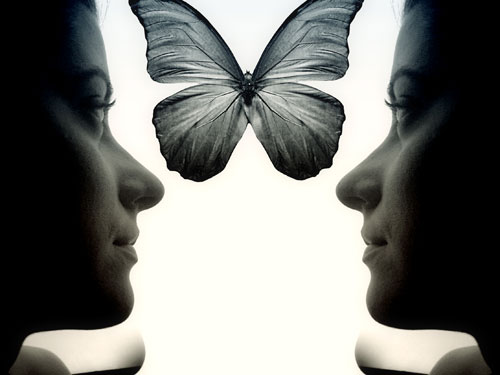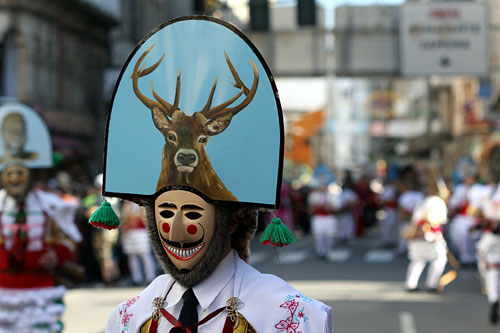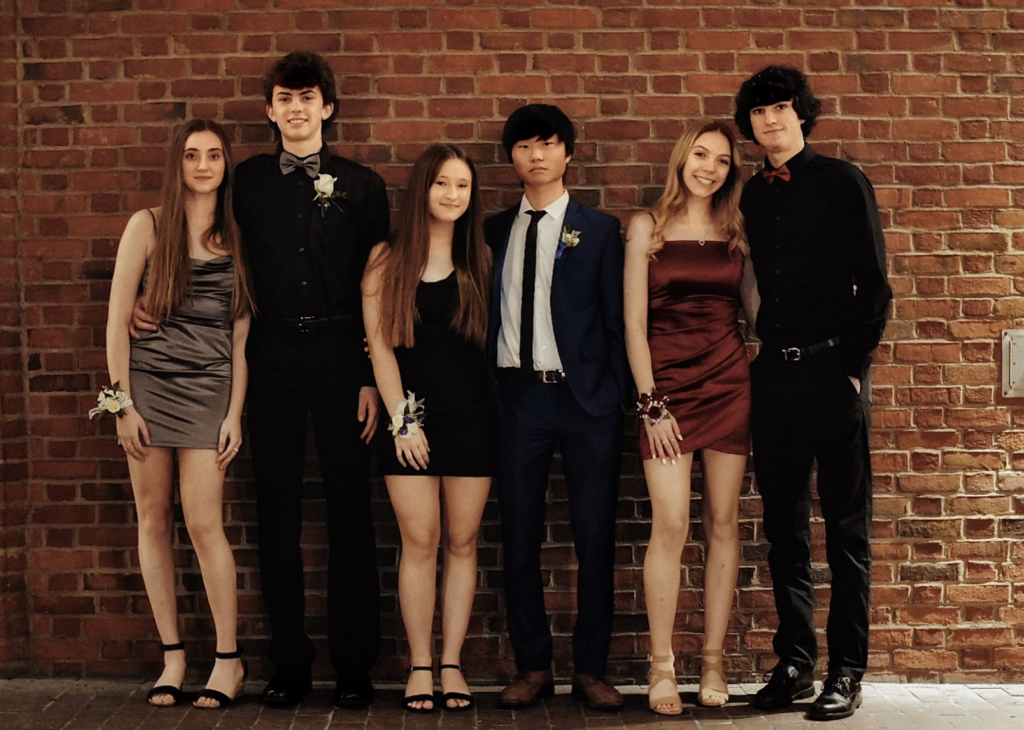By definition, a Portrait is a painting, photograph, sculpture, or other artistic representation of a person, in which the face and its expression is predominant. The intent is to display the likeness, personality, and even the mood of the person. For this reason, in photography a portrait is generally not a snapshot, but a composed image of a person in a still position. A portrait often shows a person looking directly at the painter or photographer, in order to most successfully engage the subject with the viewer. But that's not to say those are the explicit rules of portrait photography. Sometimes going outside the box is needed to evolve and change how we look and feel about a portrait.
Go Square!

The square format isn't as popular as it was decades ago when medium format camera's shot 120 film in a square, not rectangular format. Fill the frame and don't be afraid to crop in tight!
Tackle the High-Key look!

This one also just happens to be square, but high-key portraits is shooting with a white background and over-exposing the subject so only the details appear. This was taken one step further and converted to black and white.
Shoot for the emotion!

Portraits don't always and shouldn't always be the way you remember them being taken through school. Look for the raw emotion that one can exhibit and capture it!
Get in a line!

Portrait does not mean one, in this case it's a grouping of portraits for a holiday photo, but the focus is clearly on the faces. Utilizing creative techniques like this will ensure fantastic group portraits.
Mirror

Some creative post processing to add the butterfly and flip the side profile in this photo makes a direct impact. Look to showcase your work in new ways even after you've taken the photos.
Don't focus on the face!

There are no set in stone rules with photography, who says you need to focus on the face for portraits. In this wonderful example of a new baby, the feet are in focus and make a wonderful portrait I'm sure the parents will cherish for years.
Draw the details in.

This portrait focuses on the makup of the model, to really force your eyes there the photographer and art director had her wear a ski mask. While one third of her face is obscured by the mask, the details of the shot are in the eyes and makeup, the mask helps draw you to those details.
Environmental portraits.

A portrait can be taken almost anywhere, this image was captured during a parade. Because the shooter used depth of field to their advantage, they put the focus on the foreground person while still leaving enough in the background to make sense of the parade that is going on. In this case, an environmental portrait tells a story yet still shows where the focus is.
Get tight.

Get in nice and tight, fill the frame and cut some of the head off in the process. This portrait shows the intense stair the person has, that's where the story is. While his lower lips and forehead are cropped off, it doesn't take away from how powerful this image is.
Change your perspective.

Utilizing the square format again, this shooter chose to change their perspective and get low to capture the subject and also include the kite they are flying. By changing the perspective entire feel and story of the portrait changes too. Experiment getting low and above your subjects for stunning portraits.
The anti-portrait.

Similar to don't focus on the face, the anti-portrait deliberately hides or conceals the subject's face. This technique is especially helpful when doing editorial shots, in this example, the photo could fit very well into a teenage angst article.
The look-away.

This photograph shows a man not looking into the camera, but it's still very much a portrait in the classical sense of how you'd frame the shot, from about the armpits to the top of the head. Don't force your subjects to look into lens, many often find it very uncomfortable and this will translate into the photograph.
Portraits are a very intimate time, one shared between subject and photographer. The ends result can be a very beautiful thing and utilizing these techniques will enable you to create unique, lasting impressions for years of enjoyment. One of the best tools to learn how to take better portraits is to have your own done from time to time, to see how it feels on the other end of the lens so you in turn can relate better with your subjects.






12 Comments
I've been taking hundreds of pics in the last year. Everyone tells me I have a good eye. I've found the articles very informative in helping me become a better photographer. I'm very interested in photos of people. Thanks to all!
What a great series of examples. Thank you.
Great pictures and suggestions. Do you shoot with a Hasselblad? re: Square format
Good Articles …gives an different aesthetic look about shooting
good advice ! will try some of it out!
Very interesting article. It give me new ideas. Thanks
This is my one attempt at a high-key picture, it hadn’t even occurred to me to change high-key to b&w,doh!
This piece on portraits has got me thinking – quite an achievement! Thanks.
Great ideas! Thank you.
Nice job, I especially enjoy the third one and the description that comes with. It gave me new ideas that I would like to try. Thank you
I’m interested in the portrait aspect of photography and this steers me in the right direction! Thanks a million for such great ideas!
great job! thanks for sharing 🙂
Great ideas !! Thanks